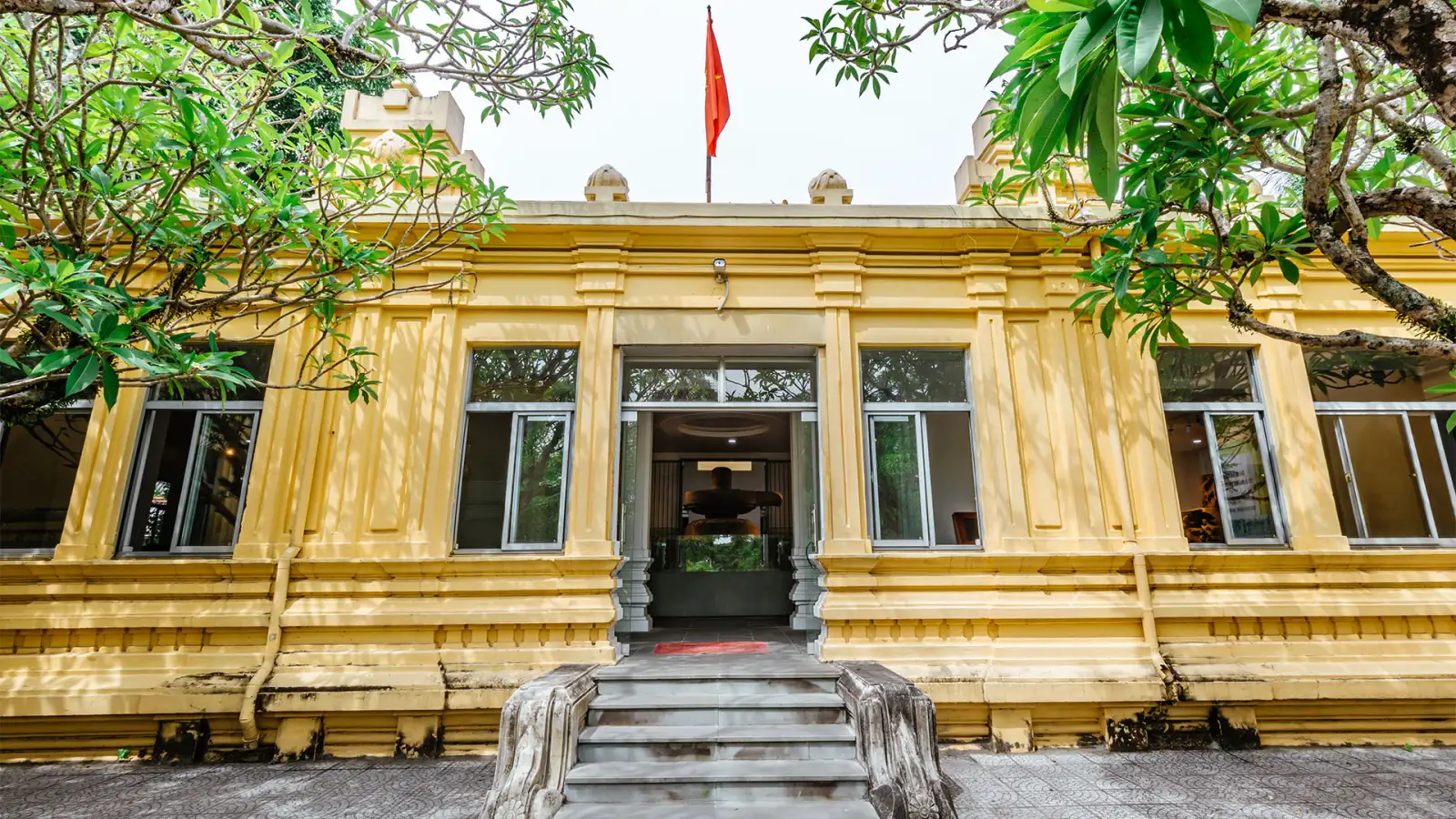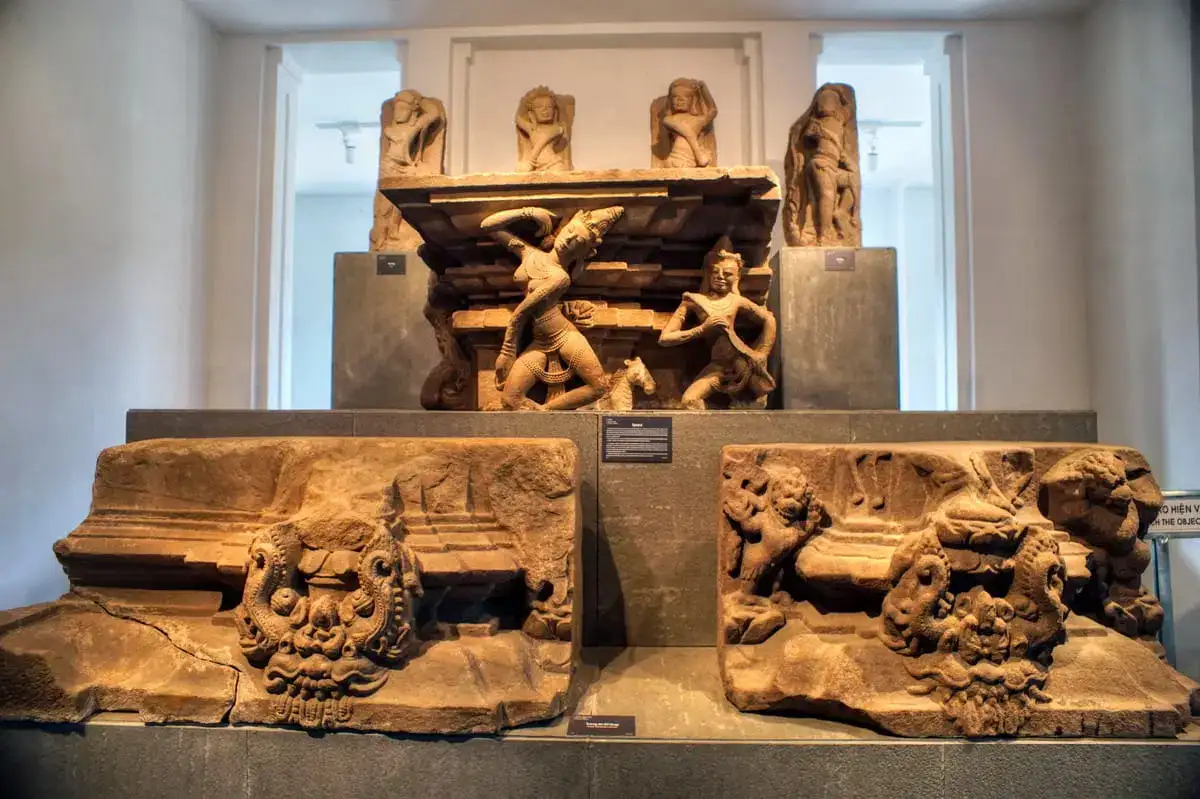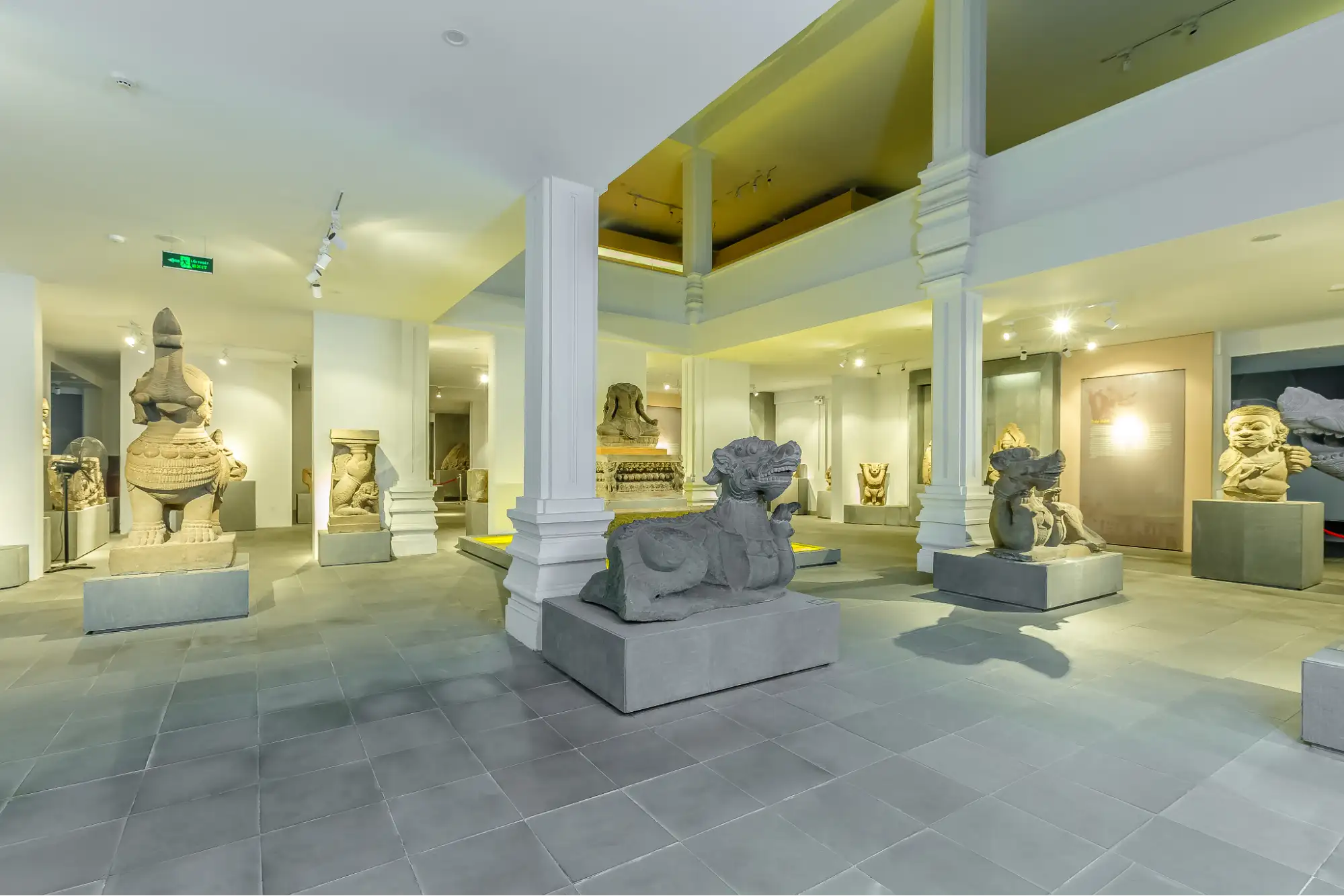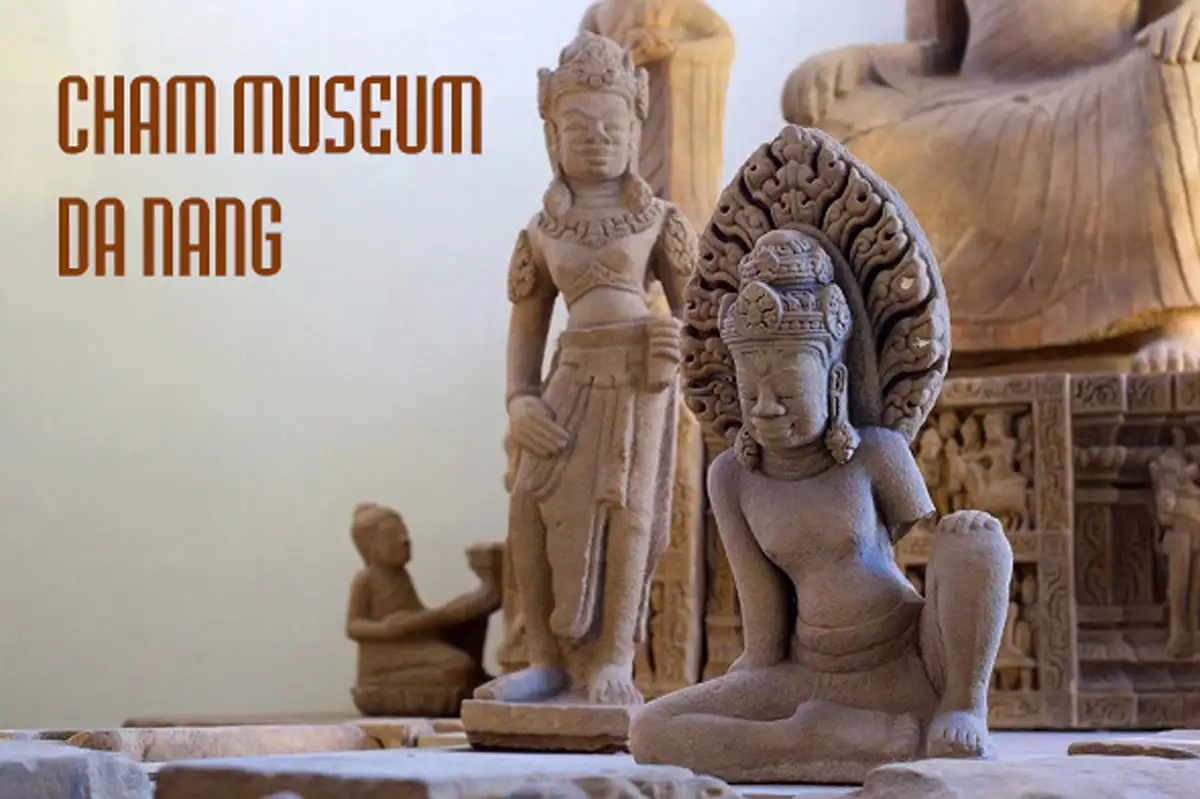Discover Da Nang Museum of Cham Sculpture
Tucked away in the heart of the city, Da Nang Museum of Cham Sculpture is a must-visit destination for culture and history lovers. Housing the most extensive collection of Cham artifacts in the country, the museum offers a rare glimpse into the spiritual and artistic world of an ancient civilization that once thrived in Central Vietnam. Whether you’re intrigued by centuries-old sandstone statues or drawn to the museum’s charming French colonial architecture, this cultural gem promises an enriching and unforgettable experience.
Essential visitor info
- Address: No. 2, 2 Thang 9 Street, Binh Hien Ward, Hai Chau District, Da Nang City
- Opening hours: 7:00 AM – 5:00 PM daily (including weekends and public holidays)
- Ticket price (reference): 60,000 VND/adult; free for children under 16.
The Cham Museum is located in the heart of Da Nang, just a few steps from the Dragon Bridge and close to other landmarks like APEC Park, the Da Nang Museum, and the Han River. From Da Nang International Airport, it’s about 3 km, around 10 minutes by taxi or motorbike. If you’re coming from My Khe Beach, the distance is around 5–6 km, making it easy to include in a day trip itinerary.

Popular ways to get there:
- Taxi or ride-hailing apps (Grab, Be): convenient and fast; costs range from 30,000–60,000 VND depending on your starting point.
- Motorbike rental: great for flexible travel; daily rates range from 100,000–150,000 VND.
- Public bus: Route 06 (Da Nang Bus Station – My Son Sanctuary) has a stop near the museum, ideal if you’re combining your trip with Hoi An or My Son.
From Bliss Hoi An Beach Resort & Wellness, it’s easy to plan a cultural escape to the Da Nang Museum of Cham Sculpture. Located about 1.5 hours from the resort, the journey takes you along a beautiful stretch of Vietnam’s central coast. Guests can book our private transportation service for a direct and comfortable ride, or connect via our free shuttle bus from Da Nang International Airport to Bliss before continuing on to the museum. Whether you’re immersing yourself in the ancient Cham heritage or pairing your visit with other Da Nang attractions, we’ll ensure every detail of your trip is smooth and stress-free.
Read more: Danang and Hoi An itinerary: The perfect Vietnam travel plan
History and architecture of the Cham Museum
The Da Nang Museum of Cham Sculpture was officially established in 1915 during the French colonial period. It was initially named the Musée Henri Parmentier, in honor of the French archaeologist who played a key role in collecting and preserving Cham artifacts across Central Vietnam.
The museum was designed by French architects from the École des Beaux-Arts de l’Indochine. Its architecture combines colonial style with Cham artistic elements. The building features arched doorways, tiled roofs, high ceilings, and open corridors. Decorative Cham patterns such as lotus flowers and mythical creatures are subtly embedded in the design, creating a connection between the structure and the ancient culture it represents.
Over the years, the museum has been expanded several times to house its growing collection. Today, it covers more than 6,000 square meters and holds over 2,000 artifacts. Most of the items date from the 7th to the 15th century, reflecting the peak of Champa art and religion.
The harmony between French architecture and Cham cultural influence makes the museum not only a place of historical value but also an architectural landmark in Da Nang.
Must-Do Activities at the Da Nang Museum of Cham Sculpture
A visit to the Da Nang Museum of Cham Sculpture offers much more than a quiet stroll through ancient artifacts. This is where history, art, and culture come alive through immersive experiences. Whether you’re an art enthusiast, a history lover, or simply curious about the rich legacy of the Champa civilization, the museum provides a range of activities that engage all the senses. From admiring intricate sculptures to exploring colonial architecture and listening to expert-led insights, here are the top things you shouldn’t miss during your visit.
Explore the most unique Cham sculpture collection in Vietnam
The museum houses over 2,000 Cham artifacts, including more than 500 original sculptures made from sandstone and terracotta. These artworks span from the 7th to the 15th centuries, showcasing religious deities, sacred animals, and motifs deeply rooted in Hinduism and Champa culture.

Among them are national treasures such as the My Son E1 altar with intricate bas-reliefs and the majestic Tra Kieu pedestal that once supported a temple statue. As you wander through the galleries, you’ll witness the refined artistry and spiritual devotion of an ancient civilization come to life in every curve and carving.
Discover Cham culture through expert narration and in-depth materials
Don’t miss the chance to learn about the stories behind each sculpture with the museum’s guided tours or audio guides, available in multiple languages. Information panels provide context about the historical background, symbolism, and archaeological value of the pieces. You can also explore themed rooms, such as those dedicated to My Son Sanctuary or Tra Kieu Citadel, for a deeper understanding of how Cham art evolved across time and regions.
Marvel at French colonial architecture in the heart of Da Nang
The museum building itself is an architectural gem. Built in 1915 by the French School of the Far East, it was designed with classic Indochine elements: arched windows, yellow walls, red-tiled roofs, and shaded corridors. The layout harmoniously blends colonial structure with traditional Champa aesthetics, offering not just a home for artifacts but a cultural symbol in its own right. The surrounding garden, dotted with sculptures, adds a tranquil charm to the museum experience.
Capture artistic moments in a culturally rich setting
Whether you’re a professional photographer or simply love snapping photos, the museum provides countless picturesque angles. From shadowed sculptures under natural light to the vivid contrast of Cham relics against the backdrop of colonial facades, every corner invites creative expression. The peaceful garden and sculpture courtyard also make perfect spots for quiet reflection or an artful break in your city itinerary.
After visiting the museum and exploring Cham culture, you can unwind at Bliss Hoi An Beach Resort & Wellness. Located on Binh Minh Beach, just about an hour’s drive from Da Nang, this peaceful retreat is a perfect place to relax and continue your Central Vietnam journey in comfort.
Read more: My Son Sanctuary Vietnam – Champa cultural heritage
Frequently asked questions about Da Nang museum of Cham Sculpture (FAQs)
Whether you’re planning your first visit or returning for a deeper cultural dive, it’s natural to have a few lingering questions. From practical concerns like parking and weather, to details about guided tours or student discounts, this FAQ section aims to answer the most common inquiries travelers have about the Da Nang Museum of Cham Sculpture, so you can make the most of your experience.

- Is there a dress code when visiting the museum?
While there is no strict dress code, visitors are advised to dress modestly and respectfully, especially as the museum features religious artifacts.
- Is it necessary to book tickets in advance?
Advance booking is not required for individual visitors. However, tour groups are encouraged to contact the museum in advance for better arrangements and guided tours.
- What languages are available for the exhibit descriptions?
Most exhibits include information in Vietnamese, English, and French. Some special displays may only be in Vietnamese, but staff are available to assist.
- Can I visit the museum during bad weather?
Yes. Most of the exhibits are displayed indoors, so it is a great option for rainy or hot days in Da Nang.
- Is there parking available near the museum?
Yes. Motorbike and car parking is available right next to the museum entrance and is usually free or very low-cost.
- Are there any food or drink facilities inside the museum?
There is no café or restaurant inside the museum, but several local eateries and coffee shops are located just across the street or within walking distance.
- Does the museum offer student or teacher discounts?
Yes. Students and teachers with valid IDs can receive discounted admission. Discounts for large student groups may also be available with prior arrangement.
- Are there any special exhibitions or temporary events?
The museum occasionally hosts temporary exhibitions, art shows, or cultural talks related to Cham culture and Central Vietnam heritage. Check their official website or social media pages for current events.
- Can I buy tickets online?
As of now, online ticketing is limited. It’s best to buy your ticket on-site at the entrance.
A visit to the Da Nang Museum of Cham Sculpture offers a journey into the heart of a civilization that helped shape Vietnam’s cultural heritage. From intricately carved deities to evocative storytelling through stone, every detail invites you to see, feel, and understand the depth of Cham culture. Whether you’re a history enthusiast, an art lover, or a curious traveler, this museum offers a timeless experience that lingers long after you leave.









